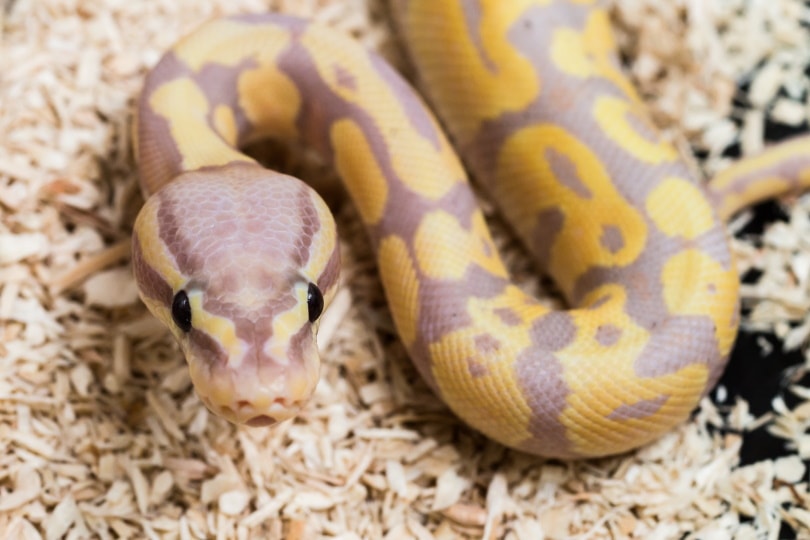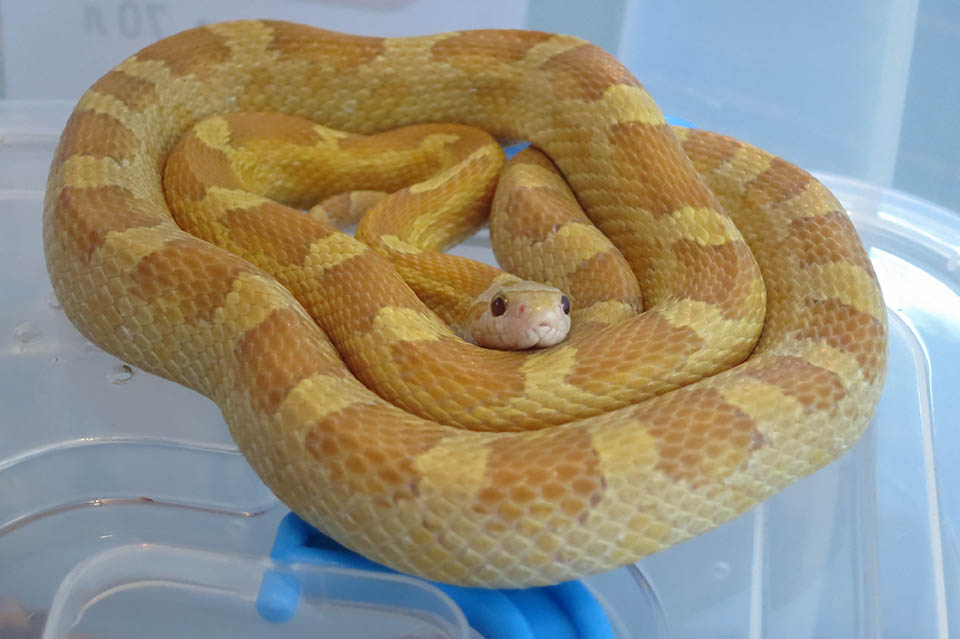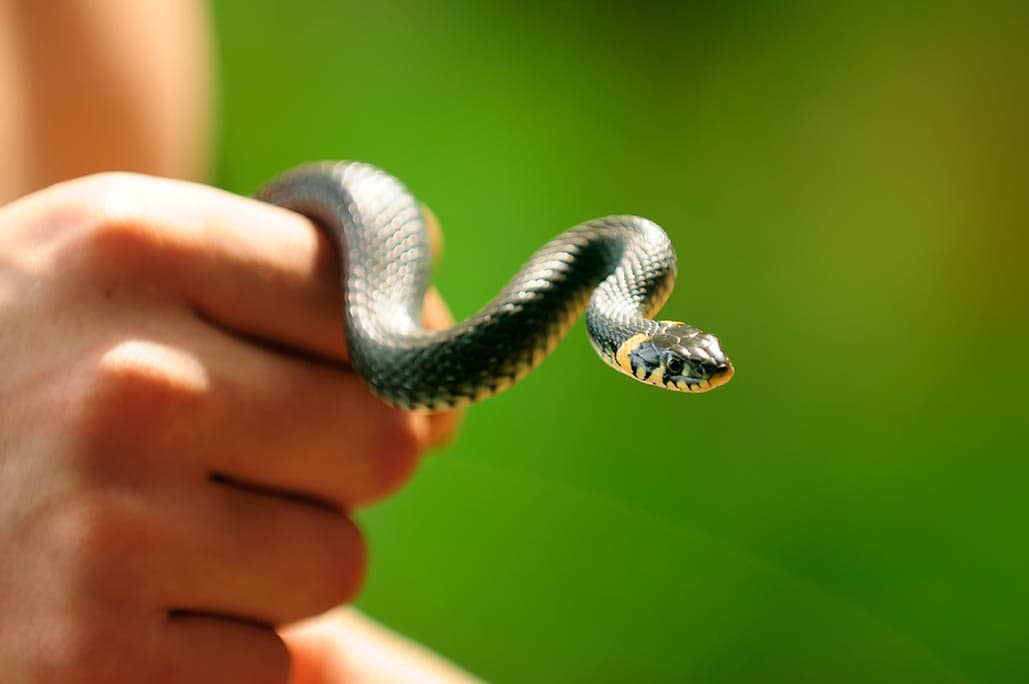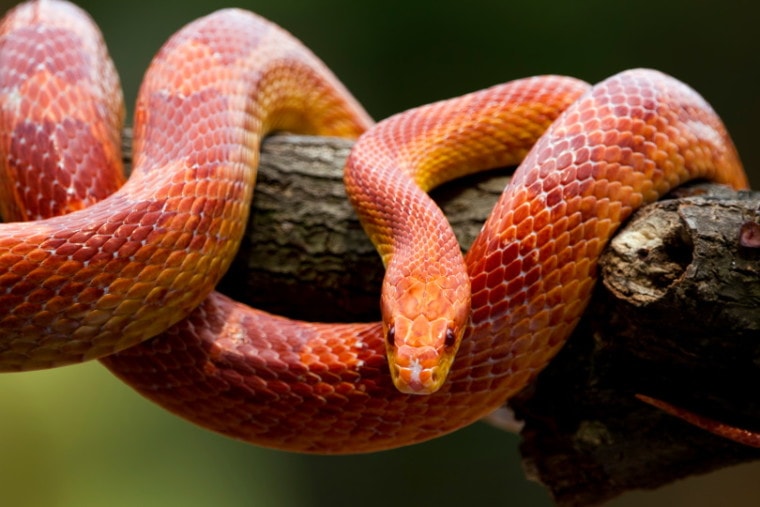
Corn snakes are incredibly popular pet snakes due to their generally docile nature, handleability, and beautiful looks. Not only are they naturally beautiful with the characteristic orange to reddish brown coloration and unique pattern, but there are also plenty of different morphs in many colors and patterns.
There are snakes in the pet trade that come from all across the globe, and knowing where your pet snake comes from is not only interesting information, but it can also help you better care for your pet. Corn snakes are native to the eastern United States and are most prominent in Florida and the Southeast. So, where are they found? Keep reading to learn more.
Corn Snakes in the Wild
Corn snakes are one of many species of rat snake endemic to the United States. Known scientifically as Pantherophis guttatus, they are also commonly referred to as red rat snakes. They are of the family Colubridae, which is the largest snake family in the world that is made up of some very diverse species.
Corn snakes are slender with slim heads, round pupils, and reach a length range of 61 to 182 centimeters (24 to 72 inches). They range in color from orange to brownish-red, with saddles that run down the body to the tip of the tail.
The saddles, or splotches as they are sometimes called, have dark borders and varying thicknesses. Neonates have much more vibrant colors and heavier contrast between their base color and saddles, which will fade as they grow and age. Their ventral, or underside is a light cream colored with a distinct black checkered pattern.
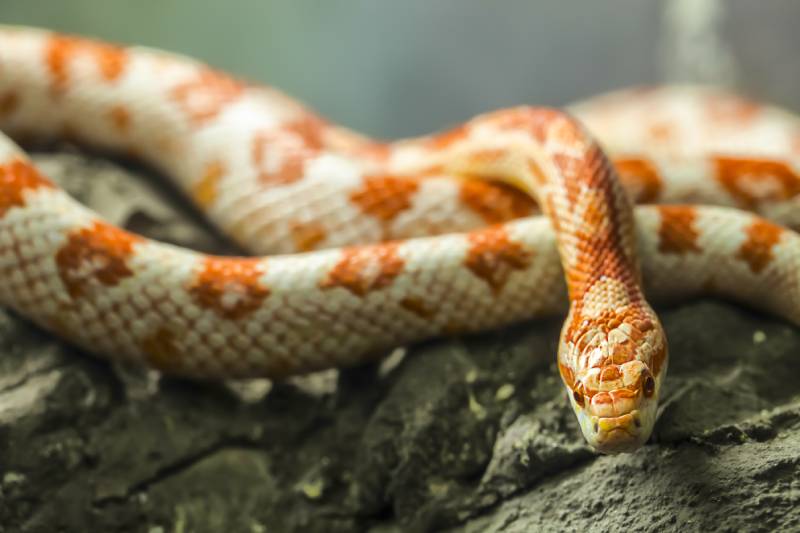
Native Range
Corn snakes are native to the eastern portion of the United States and extend as far north as New Jersey and as far west as Louisiana. Their population is most prominent in Florida, but they also have decent numbers in Georgia, Alabama, and the Carolinas.
Introduced Range
Humans have managed to introduce many numerous species of plants and animals far outside their natural range. The corn snake is no exception and has been found in all states in Australia, where they are considered invasive pests. These populations have grown as a result of either escaped or deliberately released pets.
Under Queensland’s Biosecurity Act of 2014, they are considered a prohibited invasive animal, making it illegal to keep, feed, move, give away, sell, or release them into the environment. There are active extermination campaigns put in place by certain states within the country.
Introduced populations have also been recorded on several islands in the Caribbean, with established populations in the Bahamas, Grand Cayman, the U.S. Virgin Islands, and the Lesser Antilles. Corn snakes can thrive in these areas because they are similar to their natural climate and habitat needs.
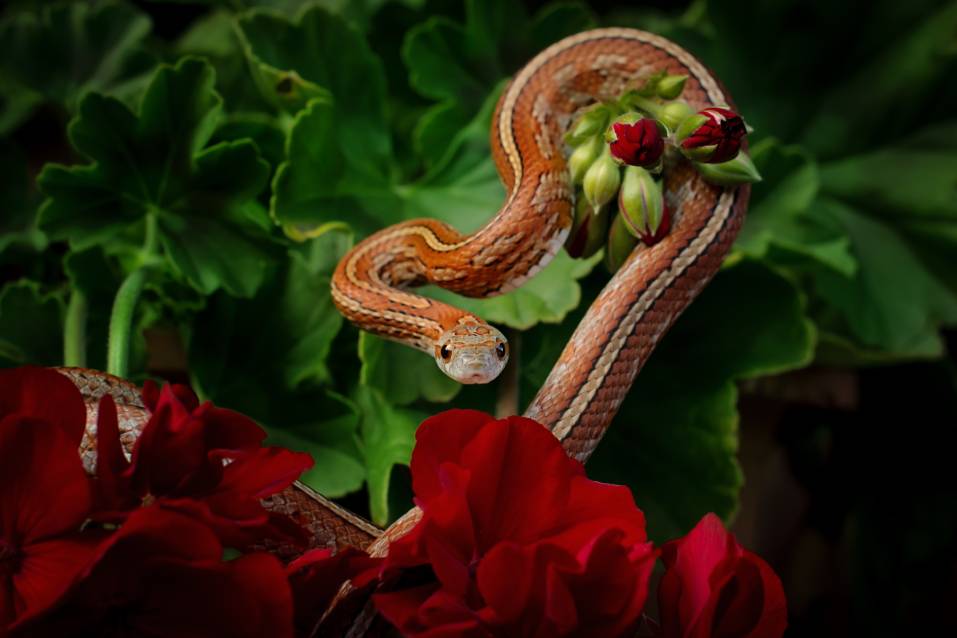
Natural Habitat
Corn snakes can be found in a variety of habitats within their range. This includes overgrown fields, forest openings, wooded groves, rocky hillsides, meadows, rocky outcrops, and tropical hammocks. They can often be found in uninhabited human dwellings such as barns and abandoned buildings in search of prey.
During the cooler months of the year, they are primarily active during the day, while in the warmer months, they are mostly nocturnal. They often hide beneath logs, rocks, bark, or other debris and frequent rodent burrows in search of a meal. They are also excellent climbers that are commonly found on trees or various human structures.
Diet
Corn snakes are constrictors that use their incredible senses to track down prey, strike, and then quickly coil themselves tightly around their prey, suffocating then consuming them whole. They primarily feed on rodents like mice and rats, but they will also feed on birds, bats, small lizards, and frogs.
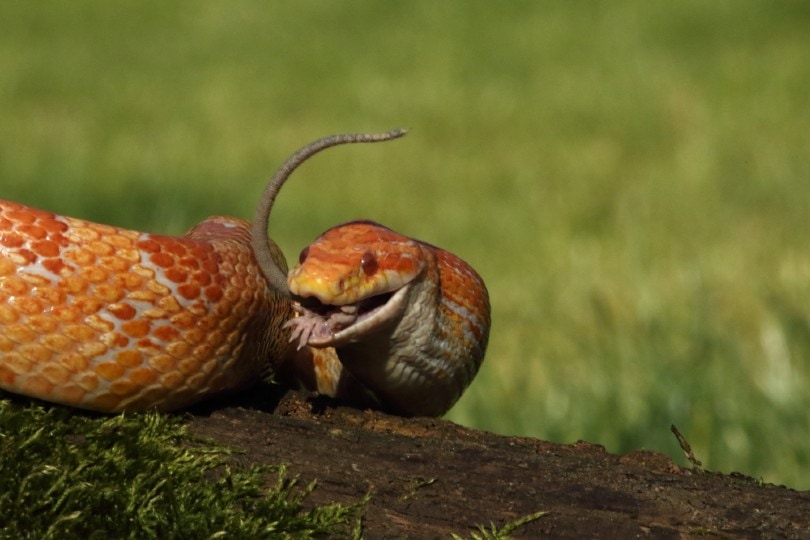
The Confusion Between Corn Snakes and Copperheads
Like many other species of non-venomous snakes throughout the eastern United States, corn snakes are commonly misidentified as the venomous Copperhead, and often suffer a tragic fate due to the mistaken identity. While many snakes die unnecessarily at the hands of humans, including venomous species, the corn snake bears a bit closer resemblance to the Copperhead because of their coloration and saddle patterning.
Someone with a fear of snakes and an untrained eye may easily mistake these two species, but the truth is, they are very different. Unlike corn snakes, Copperheads are pit vipers with stockier bodies, triangular-shaped heads, elliptical pupils, and a “Hershey kiss” or sometimes a broadband pattern. Copperheads also have no pattern on their head, while the corn snake does. They also give live birth, while the corn snake lays eggs.
It’s important to note, however, that just because Copperheads are venomous doesn’t mean that people should go out of their way to kill them. Like any other snake, they do not set out to harm humans. They only bite as a defensive mechanism when they feel threatened.
If you see a wild snake, they are either out searching for prey or hiding out in their natural habitat. Whether a corn snake or a copperhead, it’s best to just leave them be if you encounter them; avoid getting too close and everyone can go along their way.
For both your and the snake’s safety, it’s a good idea to learn how to identify snakes native to your region so that you can distinguish between venomous and non-venomous species. If you run across a venomous species of snake that needs to be relocated, consider searching for locals who offer snake relocation services in your area.
Final Thoughts
Corn snakes are from the eastern United States and range as far north as New Jersey and as far west as Louisiana. They are most densely populated in Florida, though their numbers are also heavy in the surrounding states.
Like any other native snake, corn snakes play an important role in their natural ecosystem and provide humans with built-in pest control since they primarily feed on mice and rats. These snakes have been introduced to other countries such as Australia and several islands in the Caribbean, where they are considered invasive.
Featured Image Credit: Kurit afshen, Shutterstock


